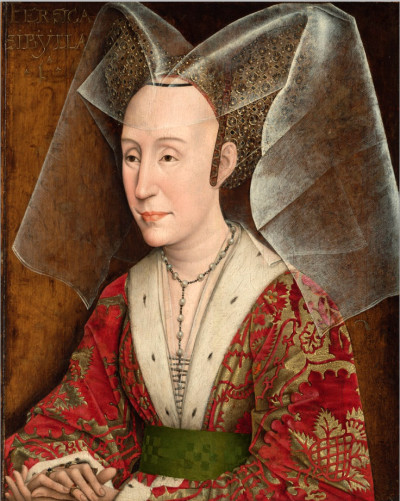Isabella of Portugal (Isabella De Avis)

Isabella was the second child and eldest daughter of King Manuel I of Portugal and his second spouse, Infanta Maria of Castile and Aragon. She was named after her maternal grandmother, Isabella I of Castile, and her aunt Isabella, Princess of Asturias, who had been her father’s first spouse. Through her father, she was a granddaughter of Infante Ferdinand, Duke of Viseu (the second son of King Edward of Portugal and brother of King Afonso V of Portugal) and Infanta Beatrice, the daughter of John, Constable of Portugal (brother of King Edward). Through her mother she was a granddaughter of Isabella I of Castile and Ferdinand II of Aragon. Isabella was second-in-line to the throne until the birth of her brother Louis in 1506. However, as the oldest daughter of Manuel I of Portugal, she was a rather attractive party. She married her first cousin, Charles V, Holy Roman Emperor, the son of Joanna of Castile and Philip the Handsome, Duke of Burgundy, who as Holy Roman Emperor, King of Spain, Archduke of the Habsburg dominions, titular Duke of Burgundy, and ruler of the Netherlands and the Spanish empire in the Americas and the Mediterranean and Italy was one of the most powerful men of his time.
In 1521 Isabella’s father died and her brother succeeded to the throne as king John III. The marriage negotiations between the Portuguese and Spanish began almost immediately. It was agreed that the new king would marry Catherine of Austria, Charles V’s younger sister. The union between Charles and his cousin Isabella had been proposed by the parliaments of both Castile and Aragon. Charles agreed to marry the Infanta Isabella purely out of political reasons as he needed a member of the dynasty to govern Spain, Castile and Aragon during his absences. The Infanta travelled to Seville where the wedding took place on 10 March 1526 in the palace of Alcázar of Seville. With Isabella also came a huge dowry to the Spanish finances. Although it was a political union, the marriage proved to be a love-match. Records say that during their honeymoon “when [Charles and Isabella] are together, although there are many people around, they do not notice anyone else; they talk and laugh, and nothing else distracts them.” Isabella also proved to be a competent consort; she served as regent of Spain during her husband’s absences, between 1529–1532 and 1535–1539. She was noted for her intelligence and beauty. Isabella died in May 1539, when her sixth pregnancy ended in a stillbirth. The Emperor was away at the time and her premature death affected him deeply. He never remarried, and he dressed in black for the rest of his life. In 1547, the nobleman Francis Borgia conveyed her corpse to her burial-place in Granada. It is said that, when he saw the effect of death on the beautiful empress, he decided to “never again serve a mortal master”, later becoming a Catholic saint. In 1580, more than 40 years after her death, her son Philip succeeded the Portuguese throne, claiming his mother’s successory rights temporarily uniting the Iberian peninsula under one crown in what would later be called the Iberian Union.
Born
- October, 24, 1503
- Lisbon, Portugal
Died
- May, 01, 1539
- Toledo, Spain
Cemetery
- Chartreuse de Champmol
- Dijon, Bourgogne
- France



